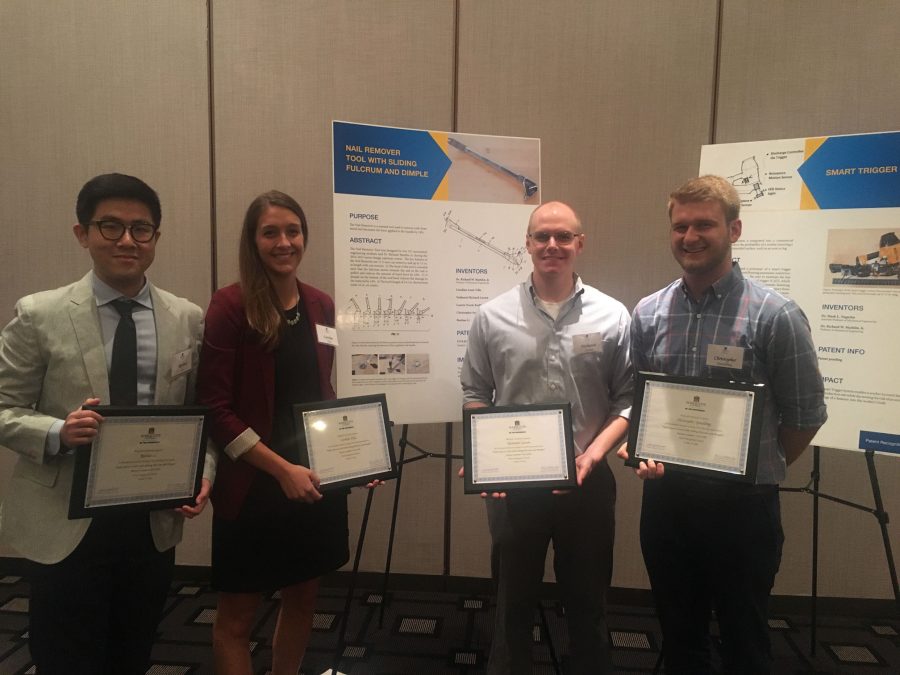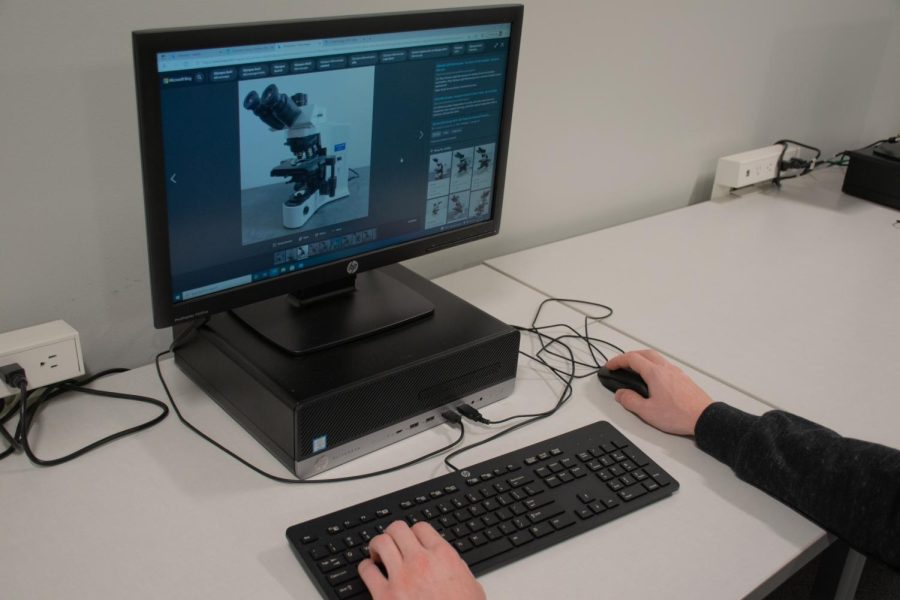Inventions ranging from prostheses to phone applications lined the walls of the Monaghan Ballroom in the Alumni Memorial Union at the Patent Recognition Awards Program Oct. 5.
Each invention was developed by a member of the Marquette community. University President Michael Lovell stood before a small crowd of the university’s top innovators to honor those who were recently awarded patents or are in the process of receiving them.
One showcased invention, the Nail Remover Tool with Sliding Fulcrum and Dimple, was designed by Richard Marklin, a professor in the College of Engineering, and five engineering students.
The device uses a sliding fulcrum to reduce the amount of force needed to remove a nail from a surface. In addition, the dimple in the tool reduces the amount of damage the process causes to the surface.
“The main idea is to reduce the amount of damage we see when removing nails while reducing the amount of force needed to remove it,” Caroline Villa, a graduate student who worked on the invention, said.
Another member of the invention team, graduate student Chris Spaulding, said the idea for the nail remover tool was initiated by Marklin, who worked closely with the project, and the students then workshopped ideas.
“We researched current products and we worked to figure out what we could and couldn’t do,” Spaulding said.
Graduate Students Lauren Radke, Nathaniel Larson and Ruohao Li, a senior in the College of Engineering, are also credited with the creation of the tool. The Nail Remover Tool with Sliding Fulcrum and Dimple was granted a patent Aug. 16, just over a year after the application was filed.
Marklin and Larson are also credited in another featured project, the Smart Trigger System. It was invented by Marklin and Mark Nagurka, an associate professor in the College of Engineering. Larson is credited with prototyping the device.
According to Larson, the overall goal of the system is to make the pneumatic nail gun, a tool that drives nails into surfaces at a rapid pace, safer to use. Marklin said there are about 40,000 injuries related to pneumatic nail guns every year, and the device will hopefully reduce those injuries by half.
The inventors said the device first takes a picture of the surface and then calibrates it to that. It then analyzes how much of the three primary colors, red, blue and green, the material gives off under white light.
“If this reading matches the reference color spectrum, it allows it to fire,” Larson said.
According to Marklin, he and Nagurka conducted a literature review of more than 50 articles that regarded the risk of injury from pneumatic nail guns.
“There’s a risk of injury because of accidental discharge,” Marklin said. “Every time you press the nosepiece it inserts a fastener. The faster the system, the larger the risk of injury.”
Marklin said currently there are no smart trigger systems for pneumatic nail guns. “Every construction site has one, if not many, pneumatic nail guns,” he said. “It has replaced the hammer as the tool for placing fasteners.”
According to the Smart Trigger System presentation poster, a patent application was filed July 13, 2015, and is currently pending.
In an approximately 30-minute ceremony, Lovell, associate vice president for research and innovation Carmel Ruffolo and vice president for research and innovation Jeanne Hossenlopp presented congratulatory certificates to inventors who were awarded patents or are in the process of being awarded a patent.




